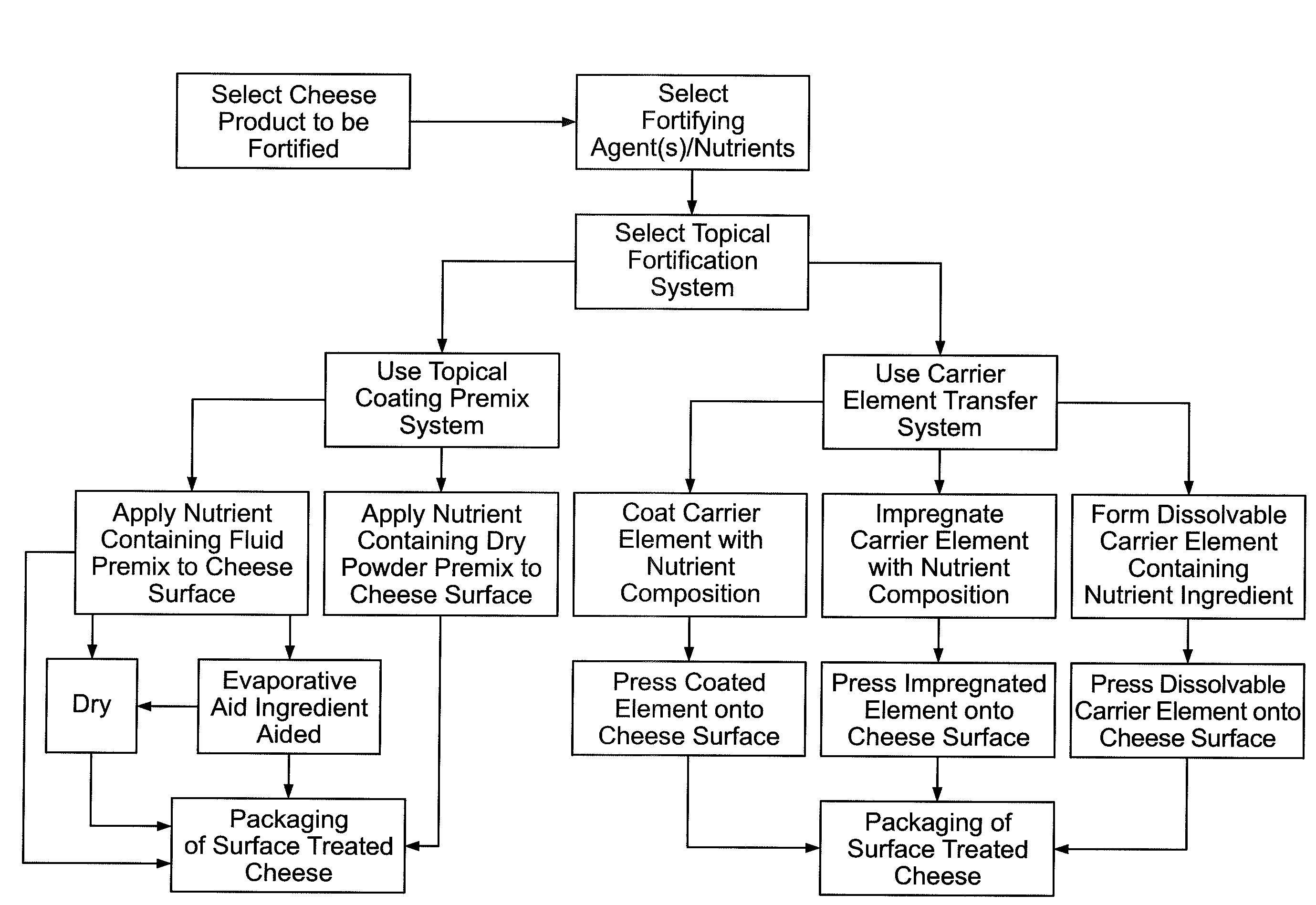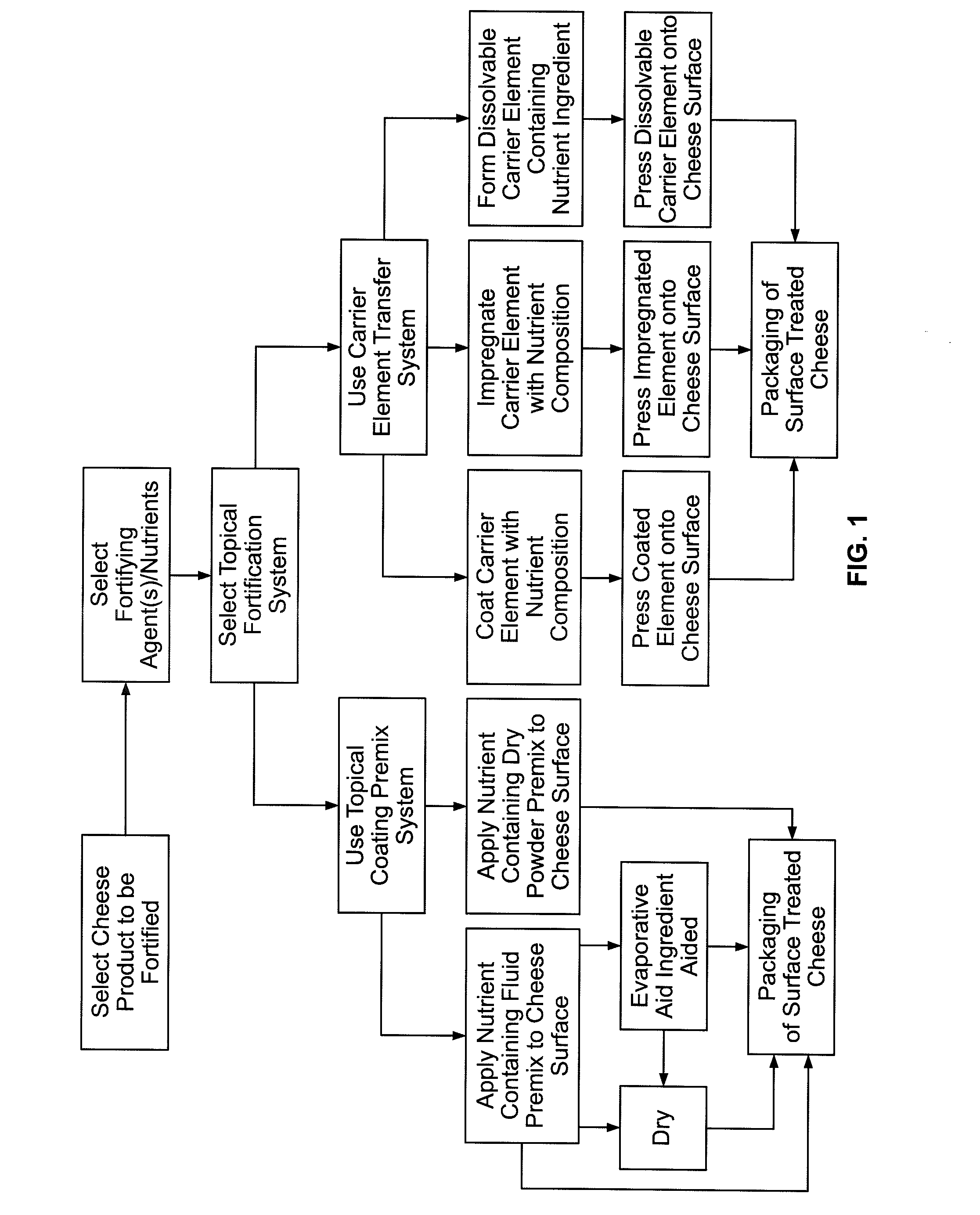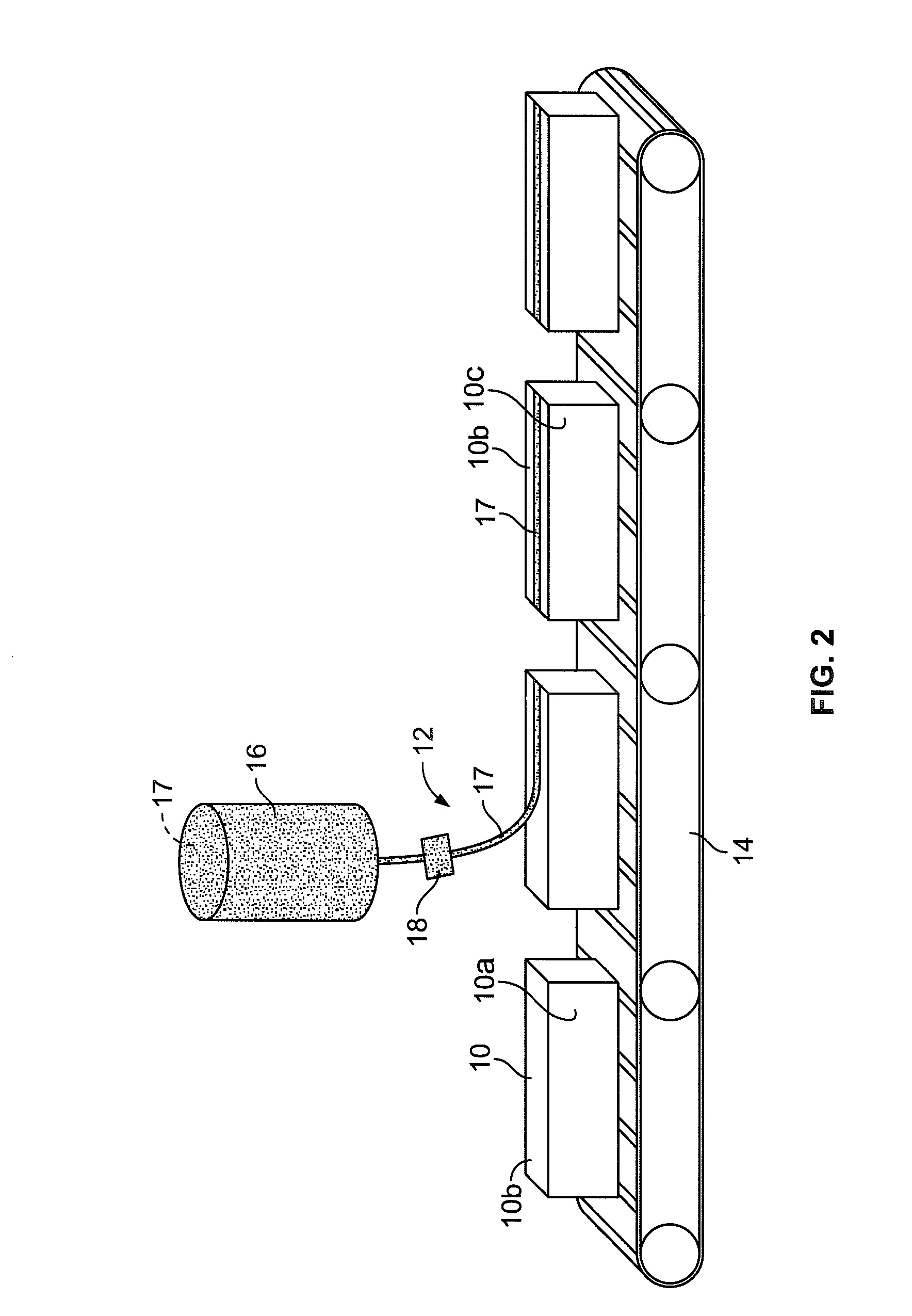Methods Of Fortifying Foods With Vitamin D And Food Products Thereof
a technology of vitamin d and fortification foods, applied in cheese manufacture, food preparation, food science, etc., can solve the problems of little incentive to investigate or improve the fortification of other foods for mass consumption, osteoporosis in adults or rickets in children, and the per capita fluid milk consumption in the united states has been steadily decreasing, so as to minimize fortification in other portions, maximize nutrient retention, and flexible effect of product streams
- Summary
- Abstract
- Description
- Claims
- Application Information
AI Technical Summary
Benefits of technology
Problems solved by technology
Method used
Image
Examples
example 1
[0070]An evaluation was performed to determine the effect of varying the level of a powdered carrier agent to an outer cheese surface. In this example, the amount of product clumping and visual appearance of a cubed cheese having different levels of a topically applied powdered carrier agent was studied.
[0071]Mild cheddar cheese was cubed. Each cube is about ⅝×⅝×¼ inches and had an average weight of about 1.9 grams. A powdered anti-caking agent containing about 60% potato starch, about 30% cellulose, and about 10% calcium sulfate was applied to an outer surface of the cheese cubes using a metered feed screw to deposit the powder on the cheese cubes as it moved by the feed screw on a conveyor belt. The powder was applied at levels of 0.5%, 0.75%, 1.0%, or 1.25%. The coated cheese cubes were then tumbled in a drum to distribute the anti-caking agent and packaged. The treated cheese cubes were visually evaluated for appearance and amount of clumping 15 and 30 days after packaging. Tabl...
example 2
[0072]A fortified cheese product was prepared by spraying individual slices of cheese with a vitamin D solution. Pre-sliced Cheddar cheese, approximately 4″×4″ square weighing approximately 23 grams each, were sprayed with a liquid fortified solution on one side of the cheese. The solution was prepared by diluting a 40,000 IU / ml stock vitamin D solution (Danisco, Copenhagen) with water to form the liquid fortified solution containing about 400 IU vitamin D / ml. Each cheese slice was sprayed using a fine mist with about 0.4 grams of the solution and either air dried in ambient conditions, dried with a stream of air under low pressure, or dried with a stream of nitrogen under low pressure.
[0073]The samples that were air dried in ambient conditions had visible solution on the surface of the cheese and did not absorb or evaporate within 30 minutes. The samples dried under a stream of air or nitrogen exhibited partial absorption or evaporation within a minute of exposure to the drying ste...
example 3
[0074]Slices of cheese as described above in Example 2 were sprayed with a slurry of potato starch and vitamin D in water. The slurry was prepared by adding about 15 grams potato starch, about 1.6 grams vitamin D (DSM, Netherlands) to about 500 ml of the solution of Example 2. The slurry was heated to about 200° F., and at this temperature about 0.4 grams of the slurry was sprayed onto each slice of cheese.
[0075]The coated cheese slices were allowed to air dry or were immediately packaged wet. To package the slices, the cheese slices were either directly stacked on top of each other or packaged with standard, unfortified interleaf paper (Wausau Paper, Mosinee, Wis.) between each slice. The stacks of cheese were then loosely wrapped in standard packaging film and stored refrigerated for 2 months at about 40° F. The cheese slices were then evaluated for the amount of transfer of vitamin D to the cheese. The results of this evaluation are summarized in Table 2 below. A control sample w...
PUM
 Login to View More
Login to View More Abstract
Description
Claims
Application Information
 Login to View More
Login to View More - R&D
- Intellectual Property
- Life Sciences
- Materials
- Tech Scout
- Unparalleled Data Quality
- Higher Quality Content
- 60% Fewer Hallucinations
Browse by: Latest US Patents, China's latest patents, Technical Efficacy Thesaurus, Application Domain, Technology Topic, Popular Technical Reports.
© 2025 PatSnap. All rights reserved.Legal|Privacy policy|Modern Slavery Act Transparency Statement|Sitemap|About US| Contact US: help@patsnap.com



